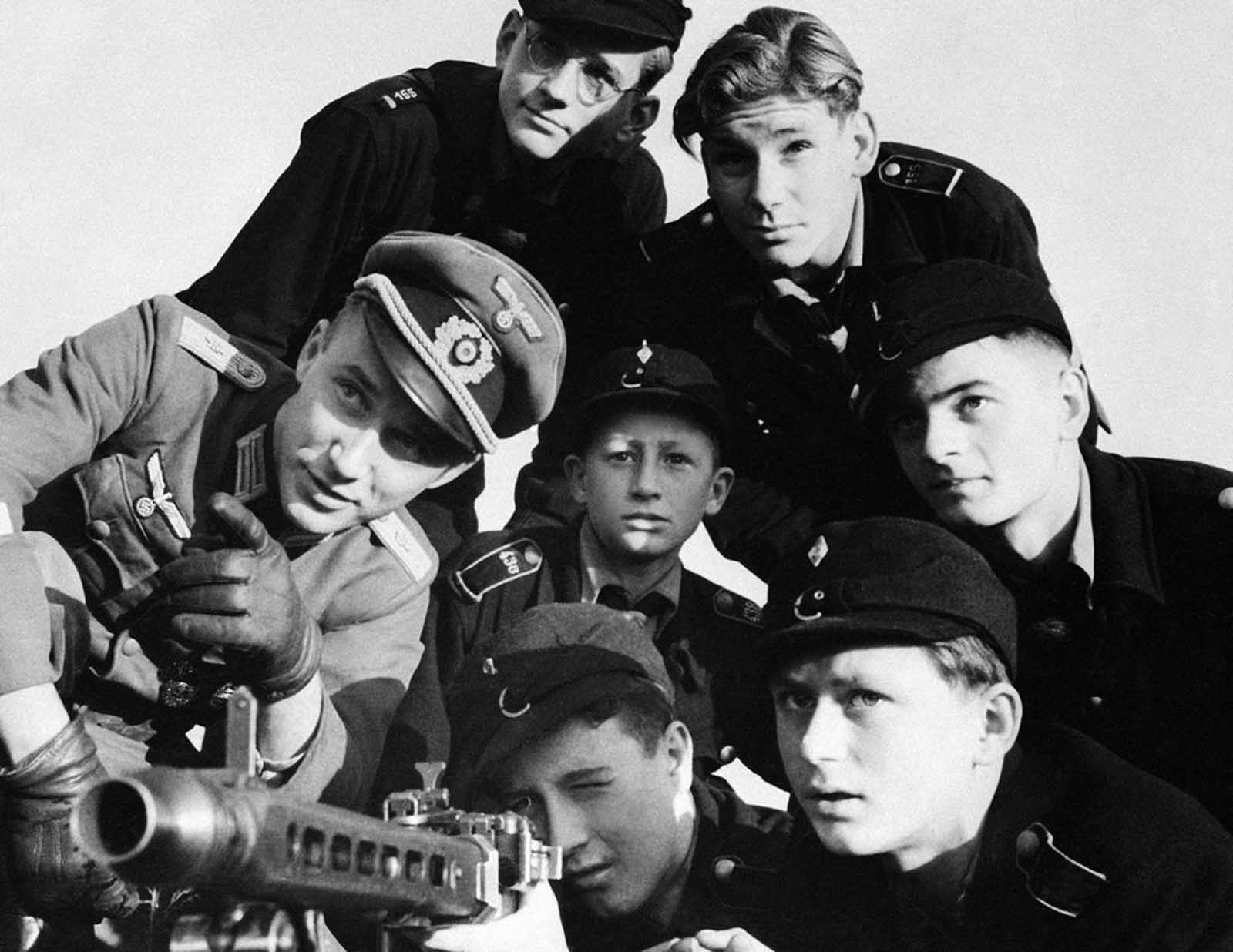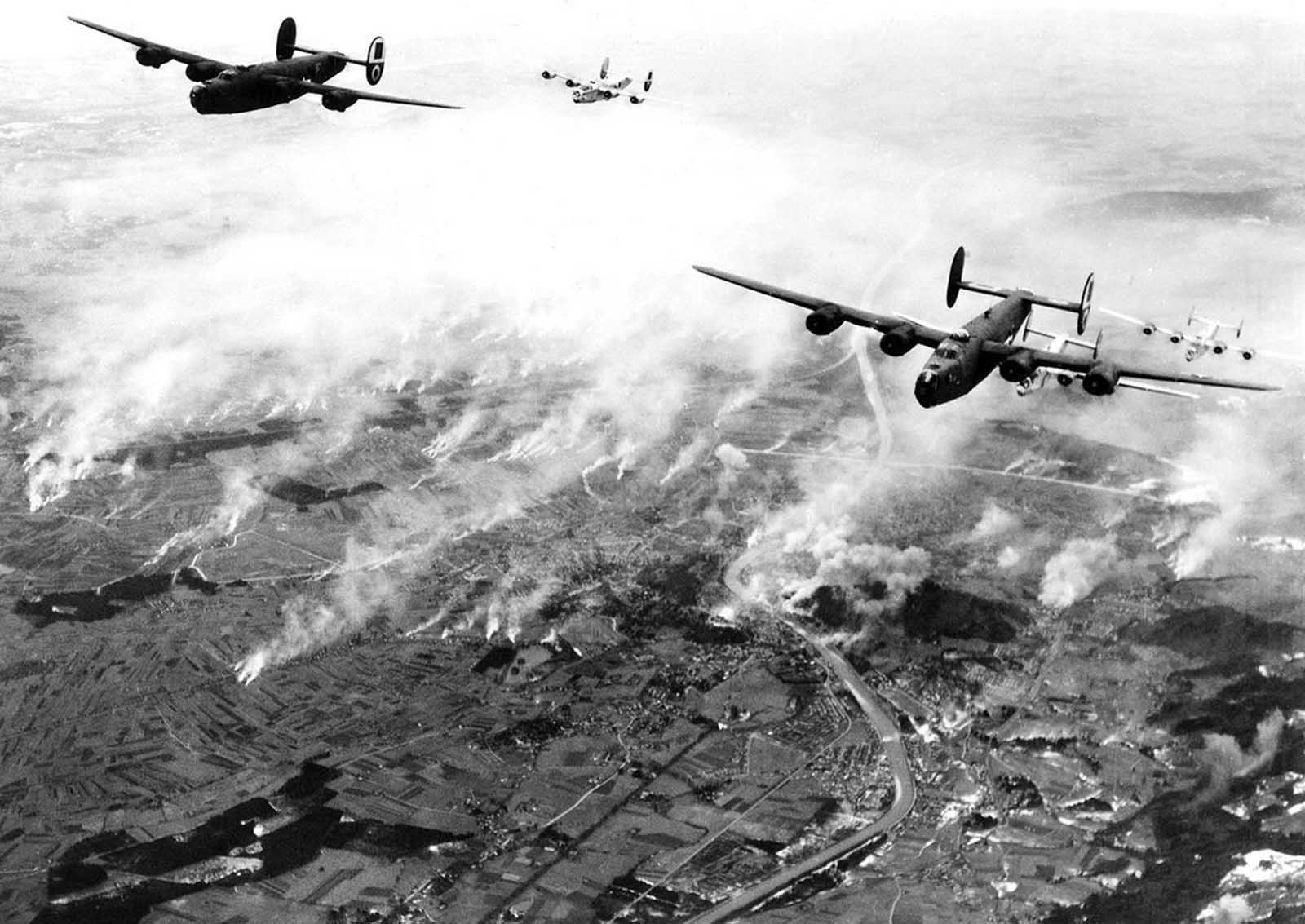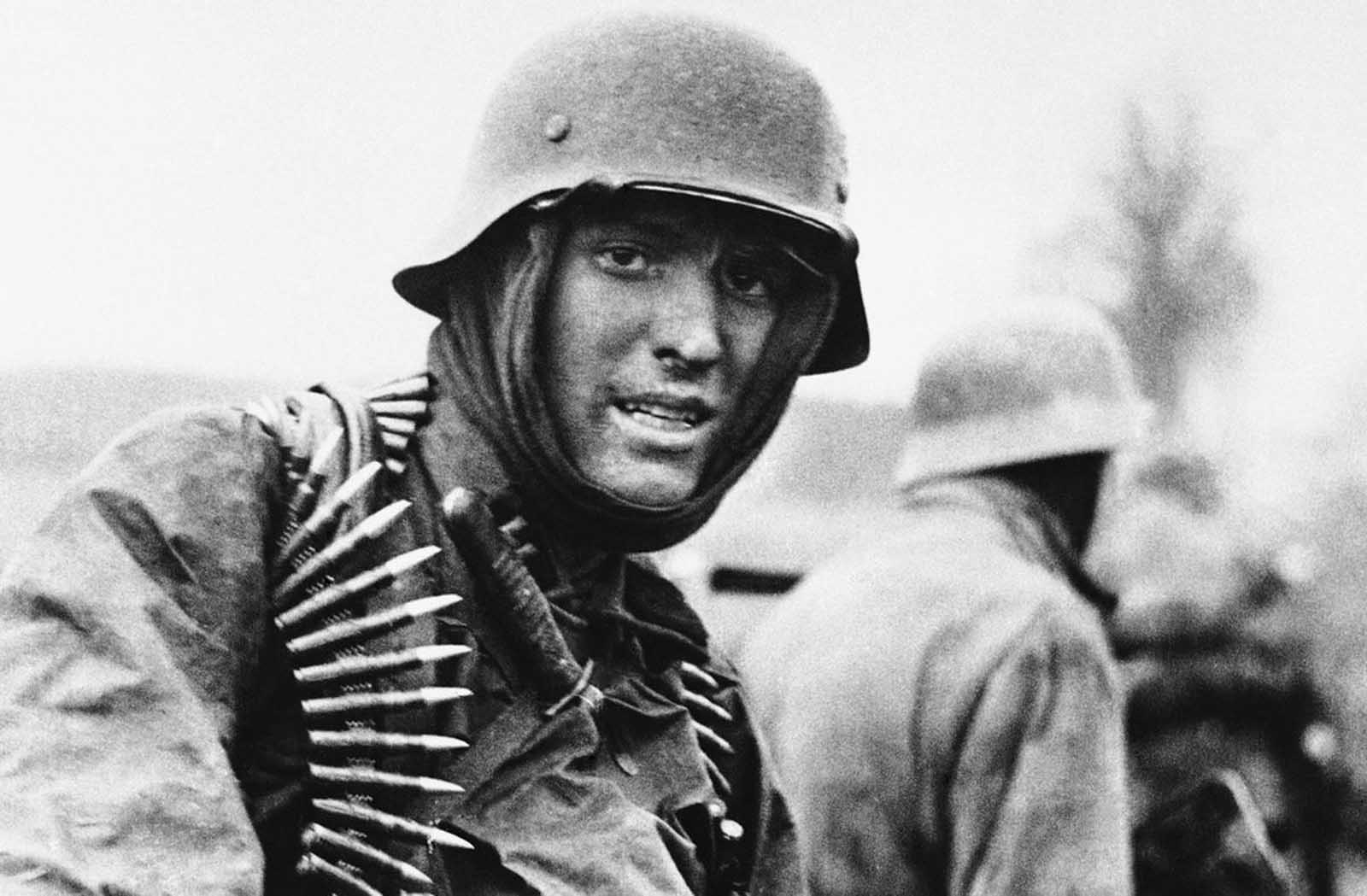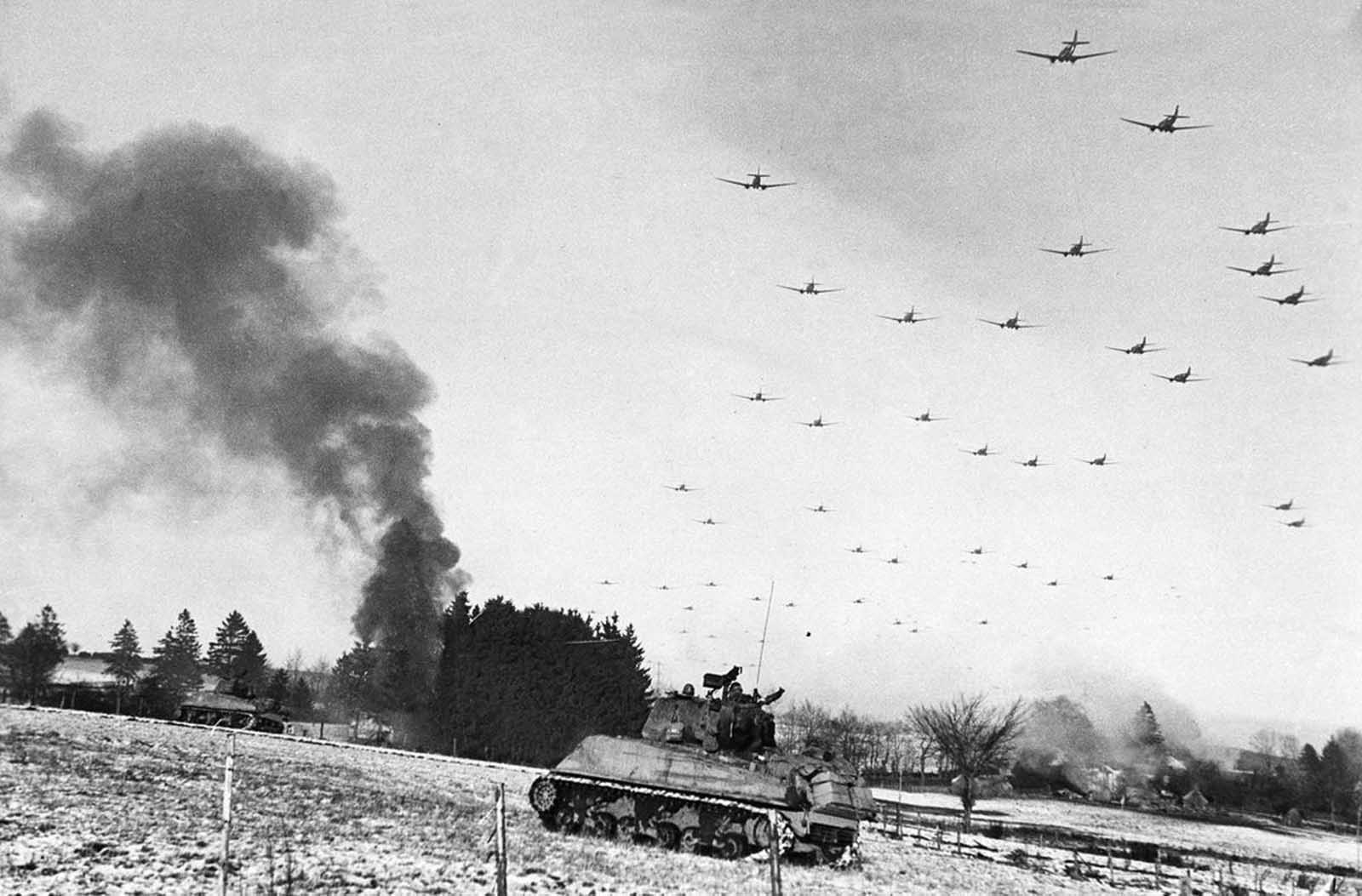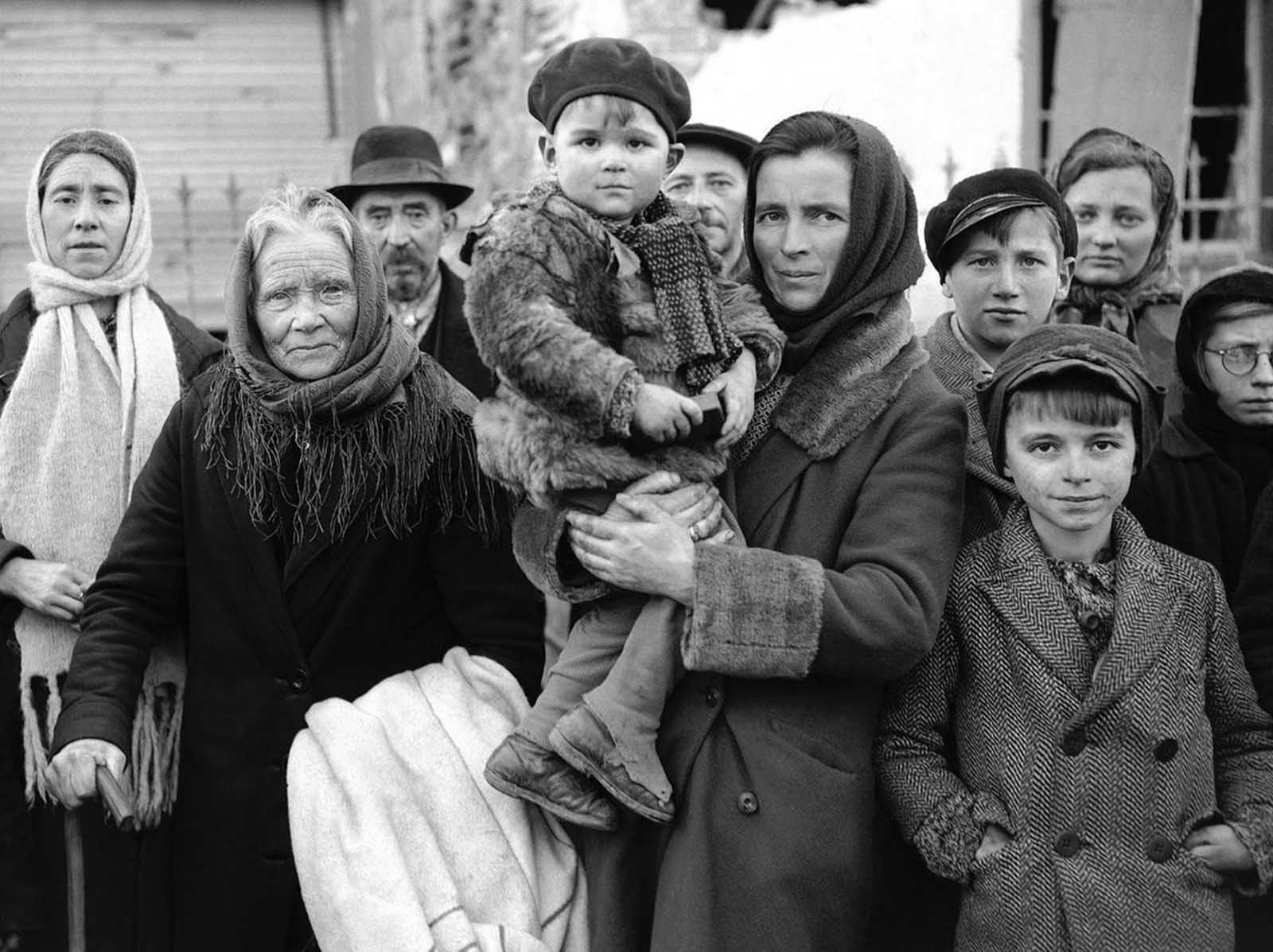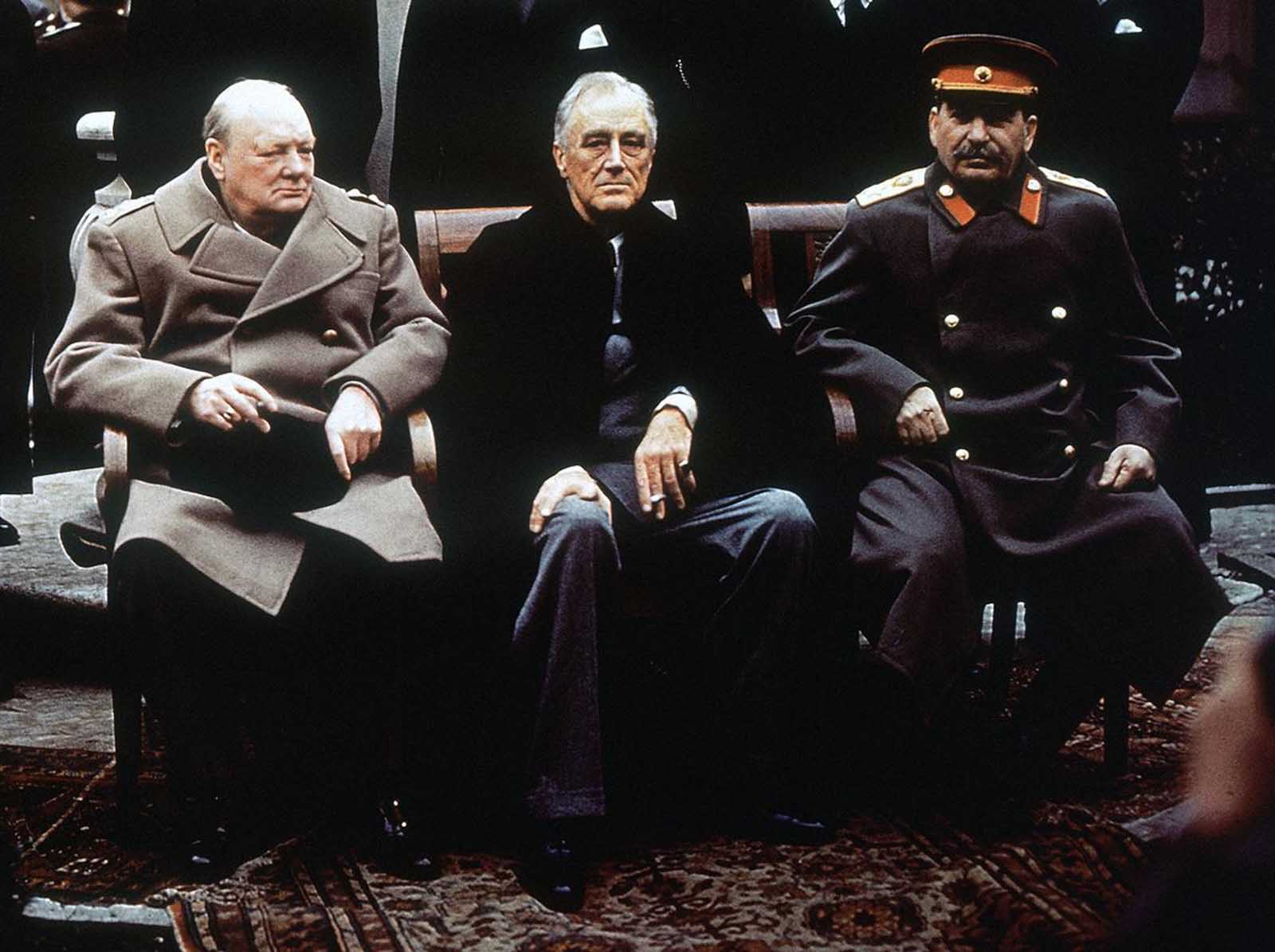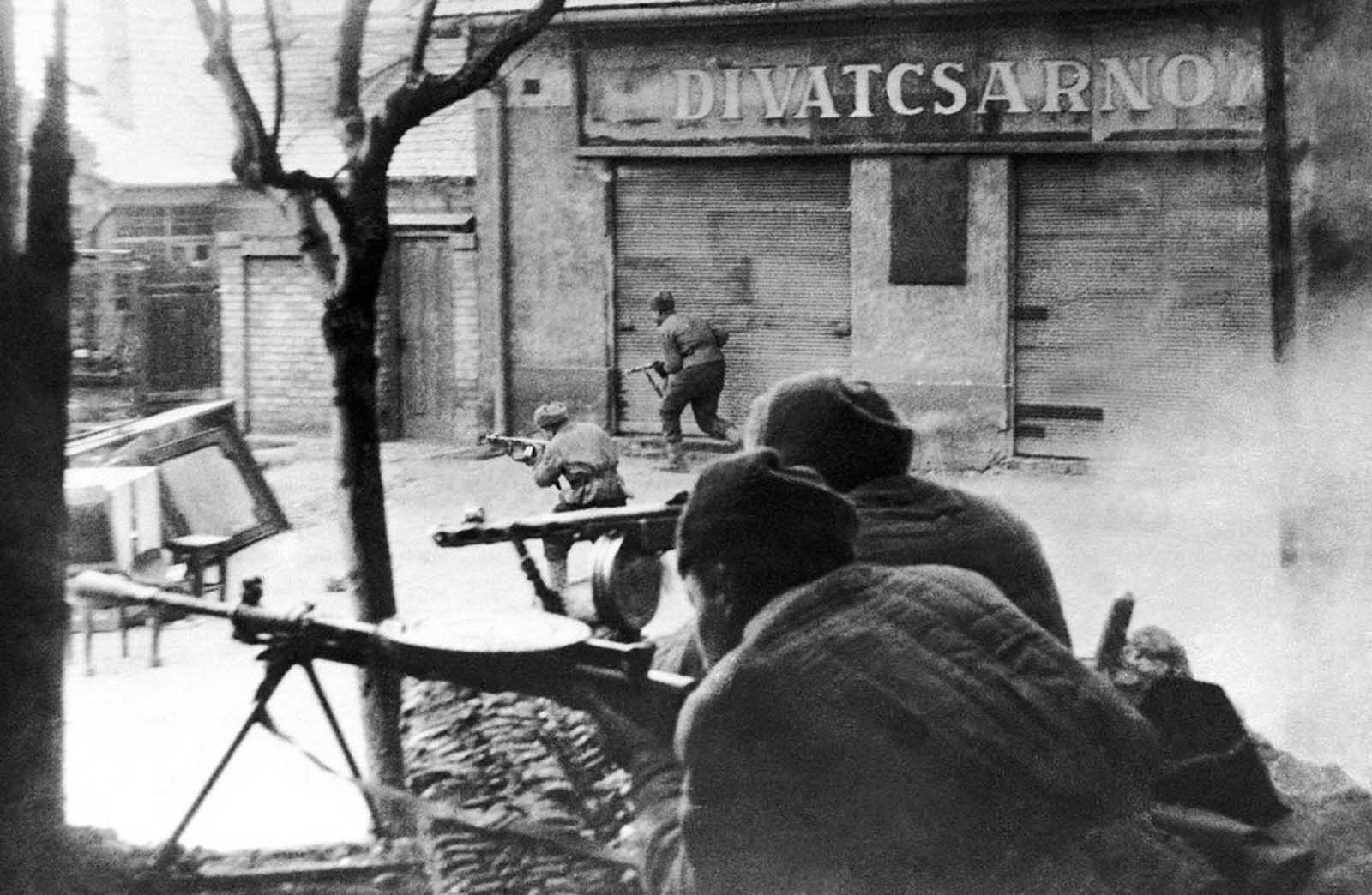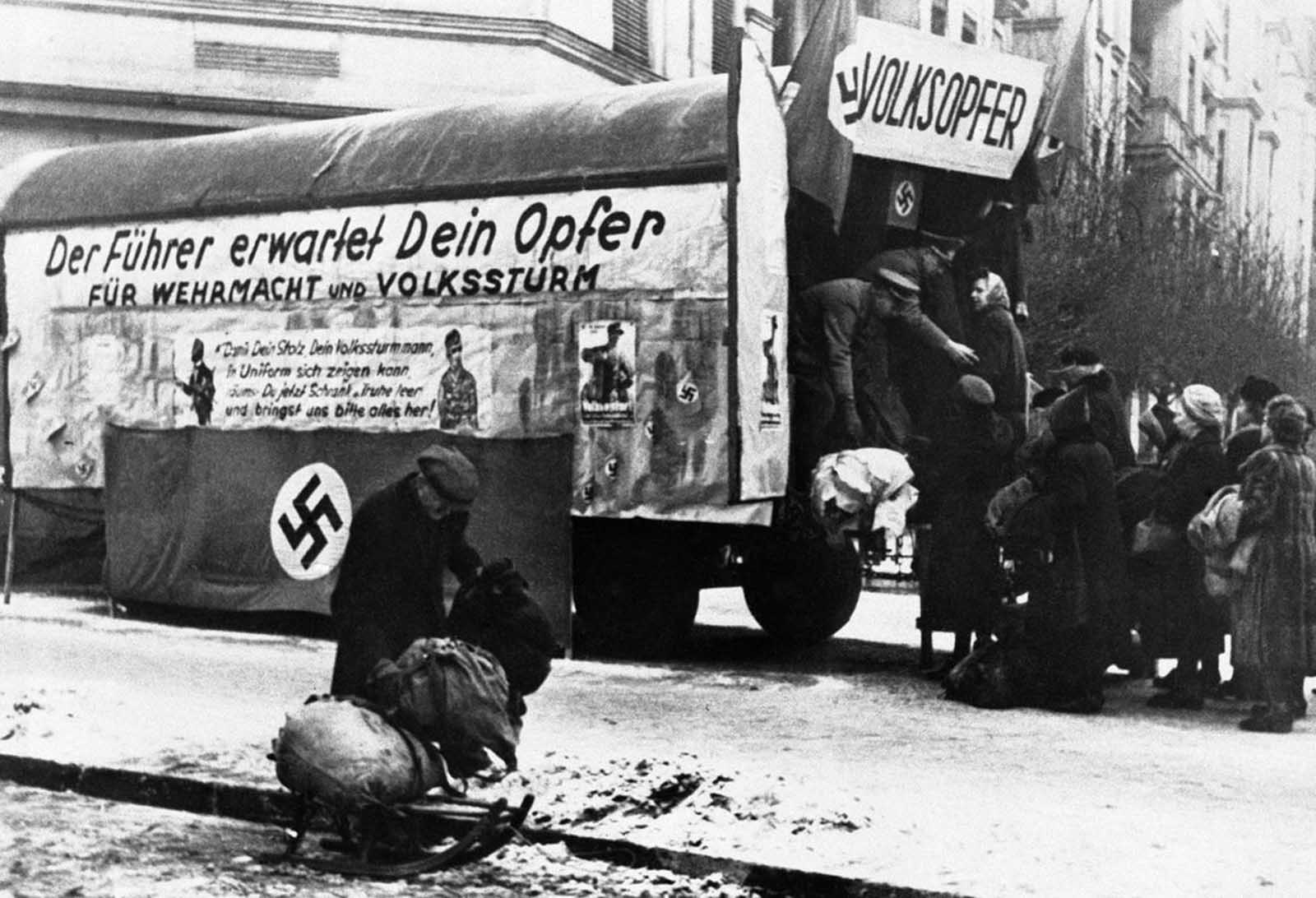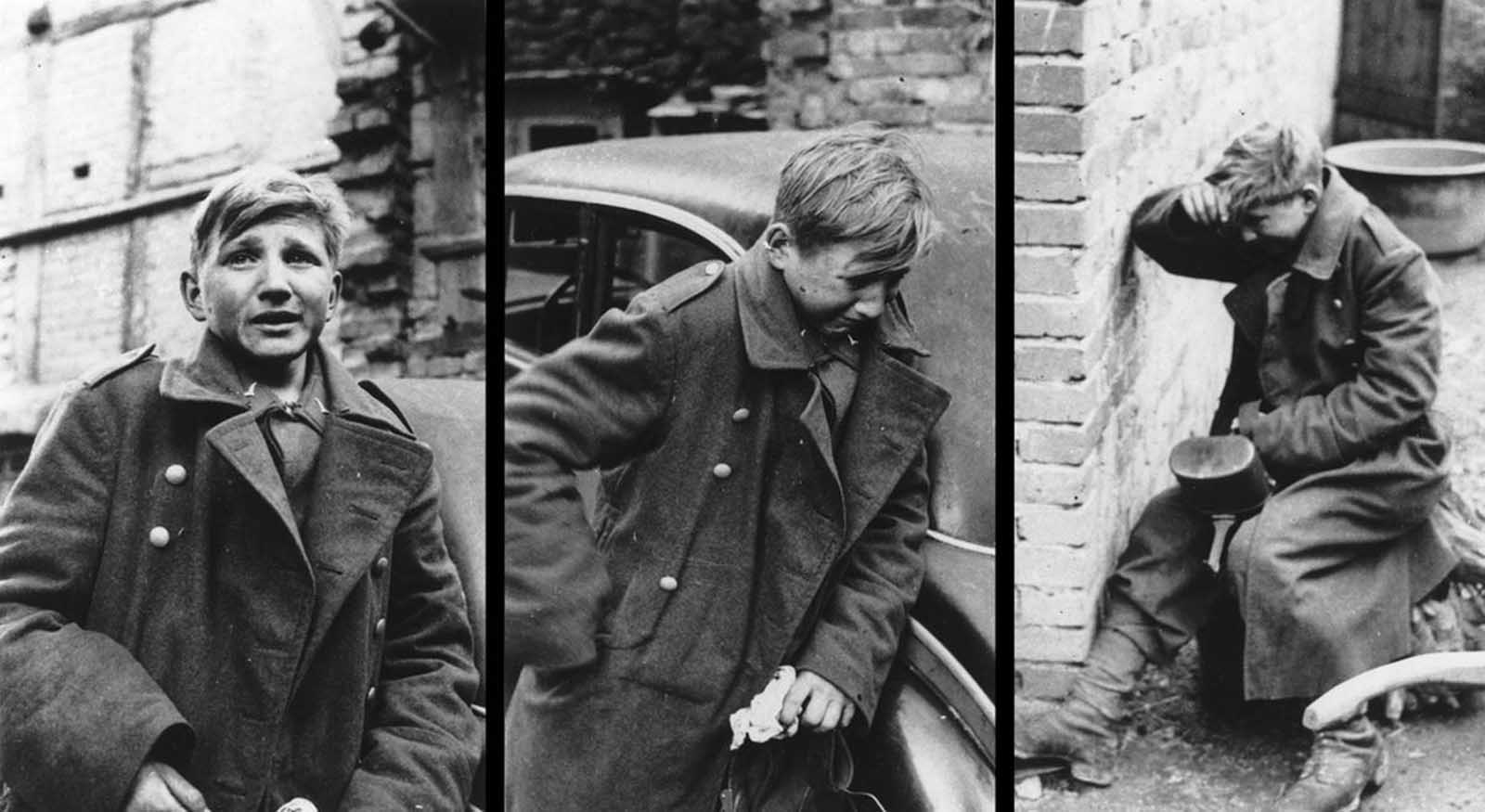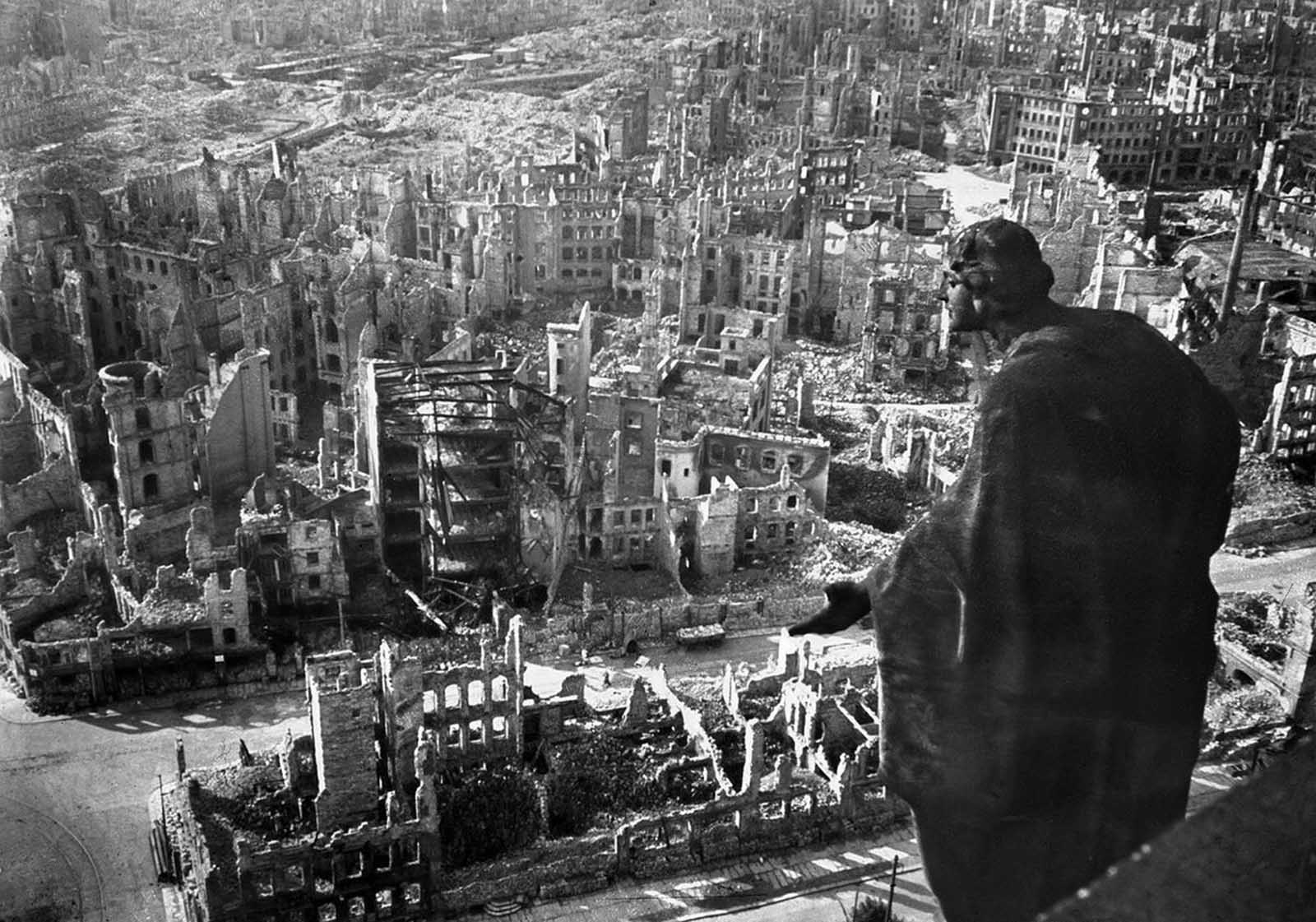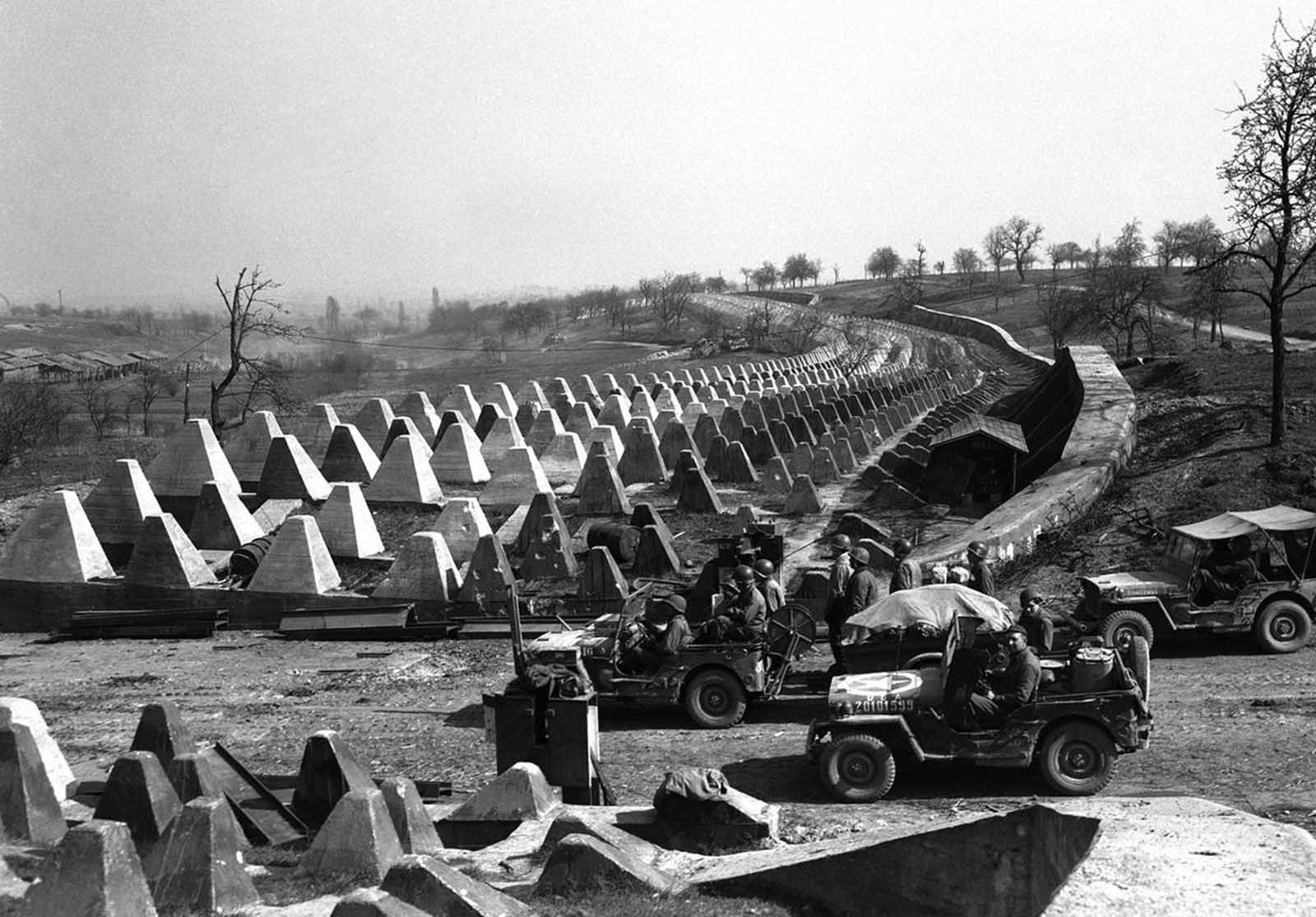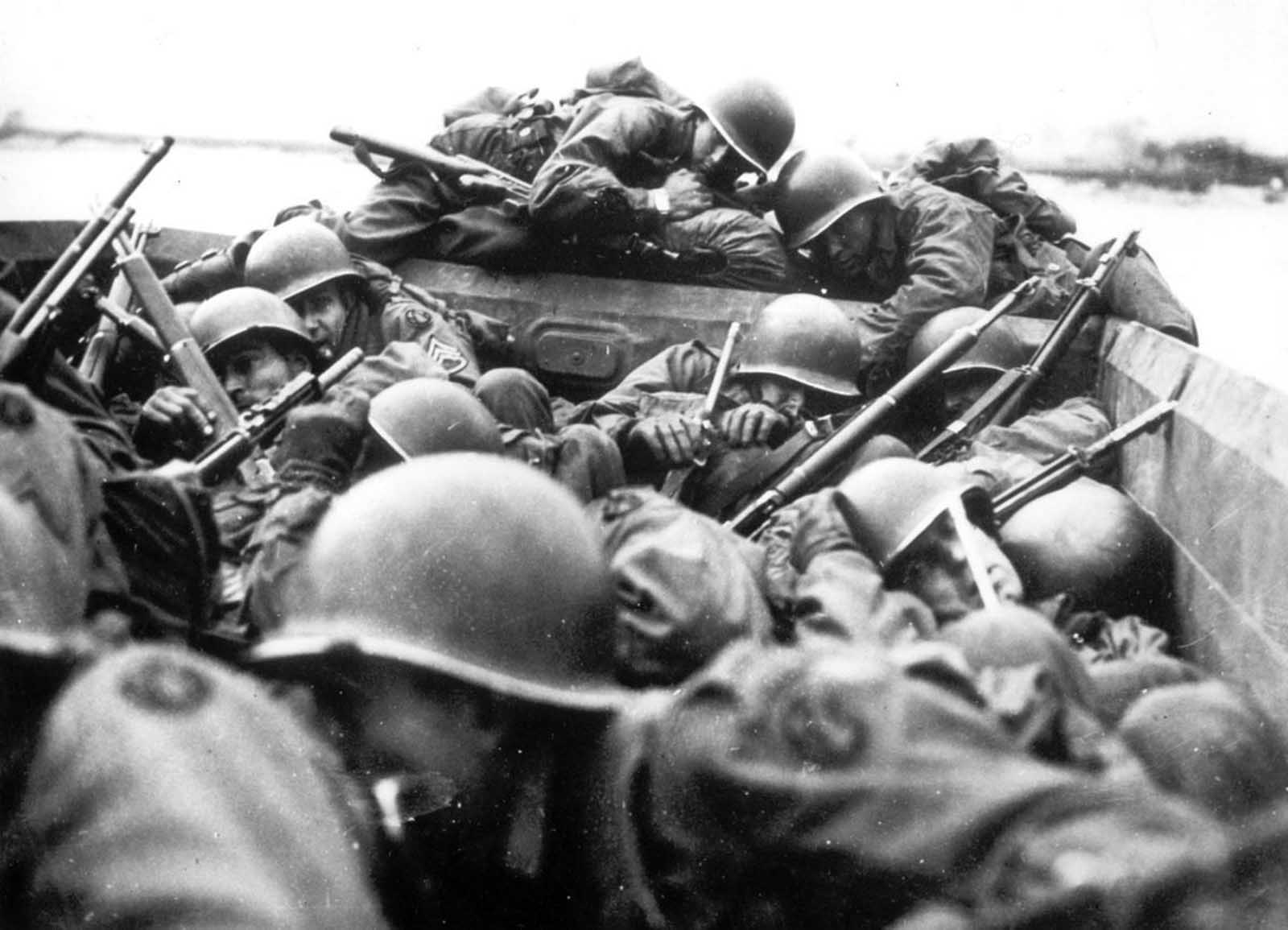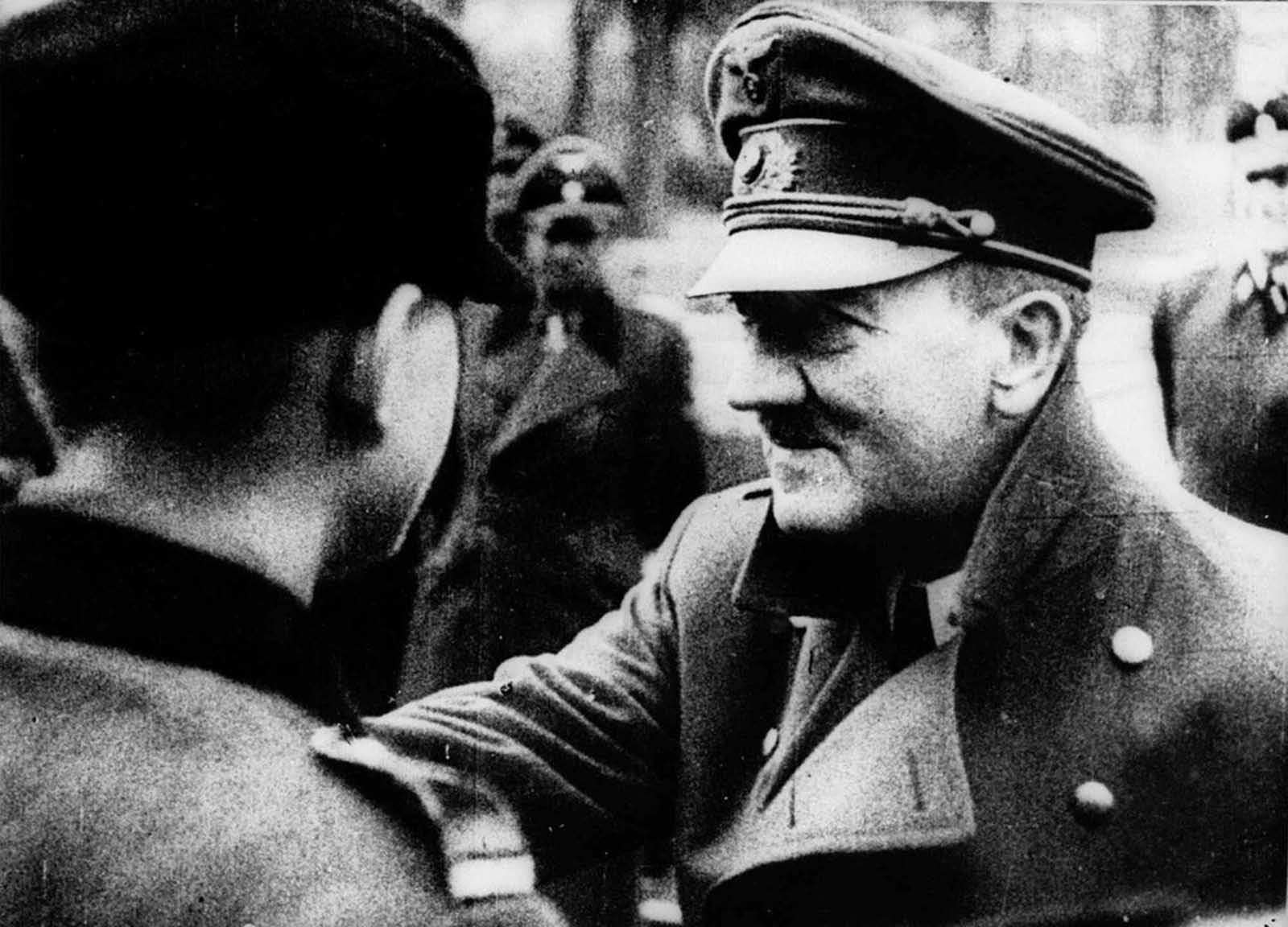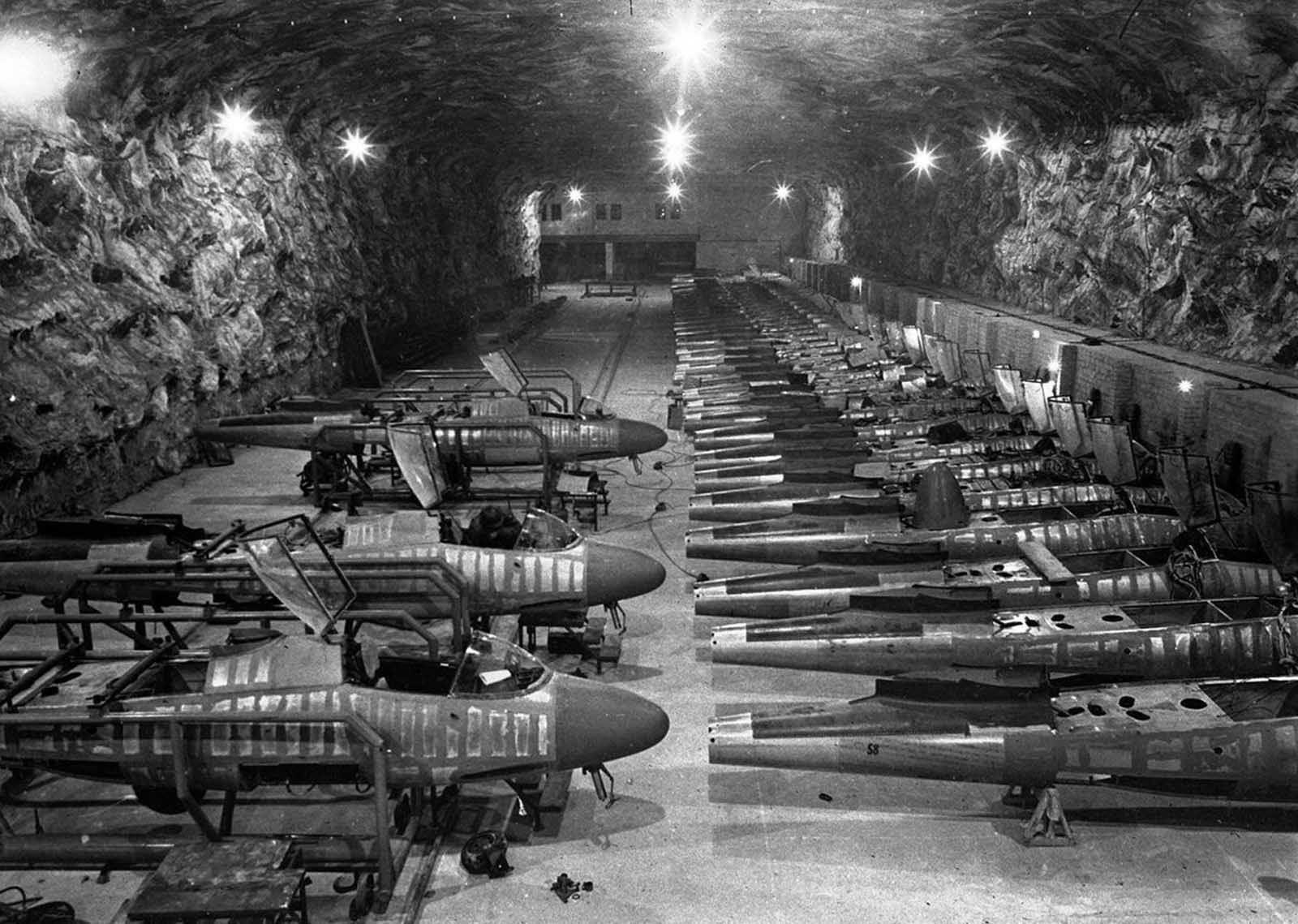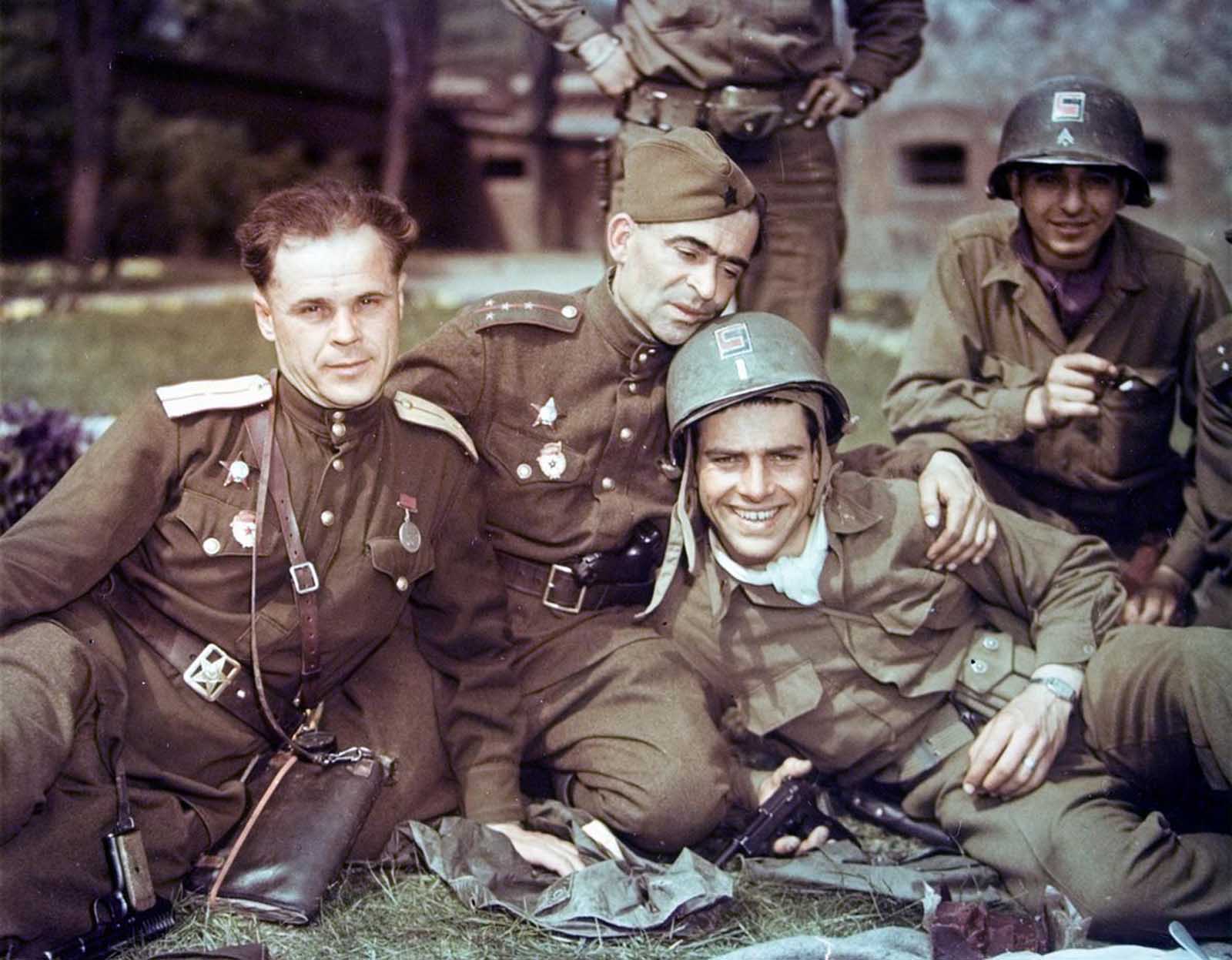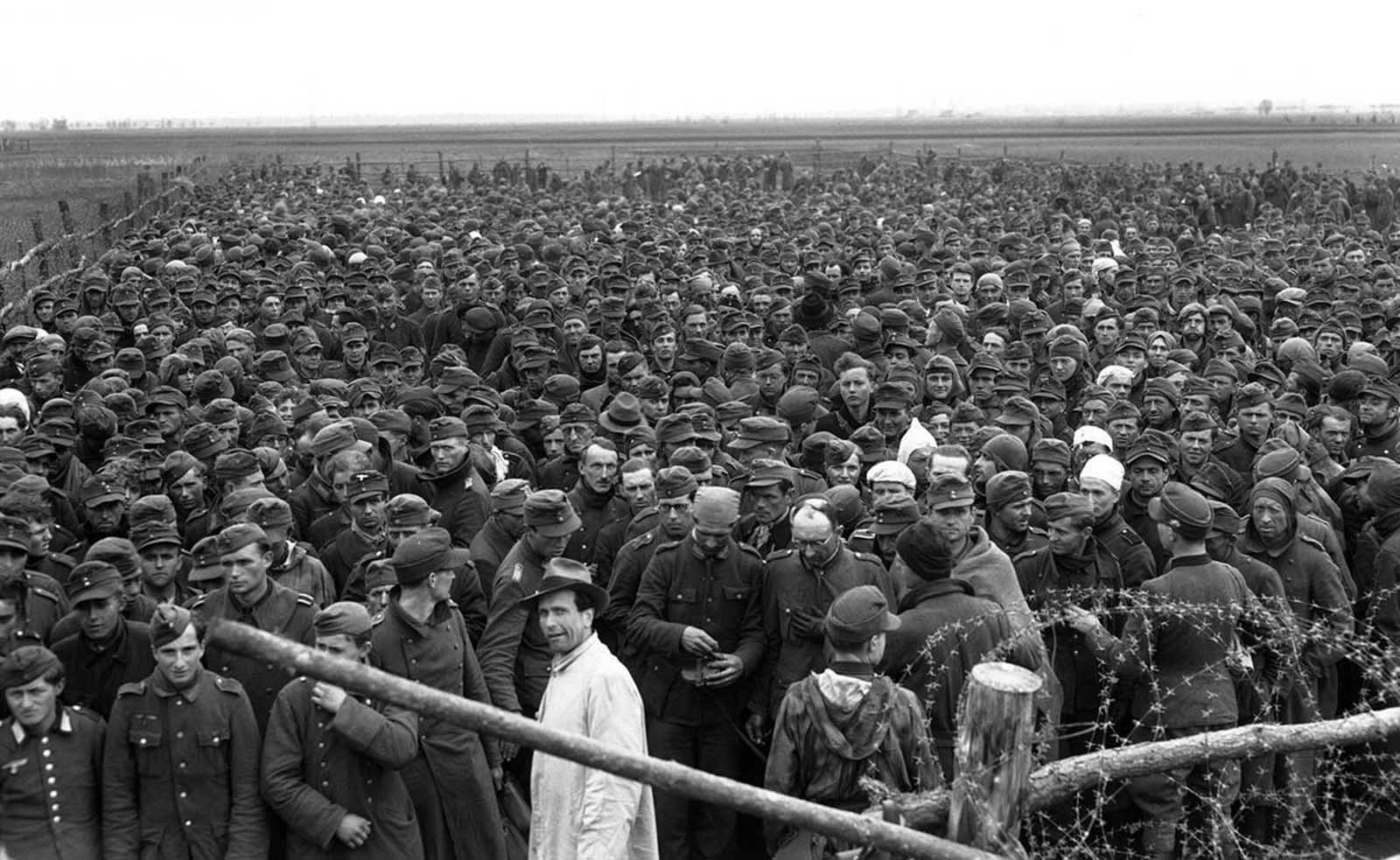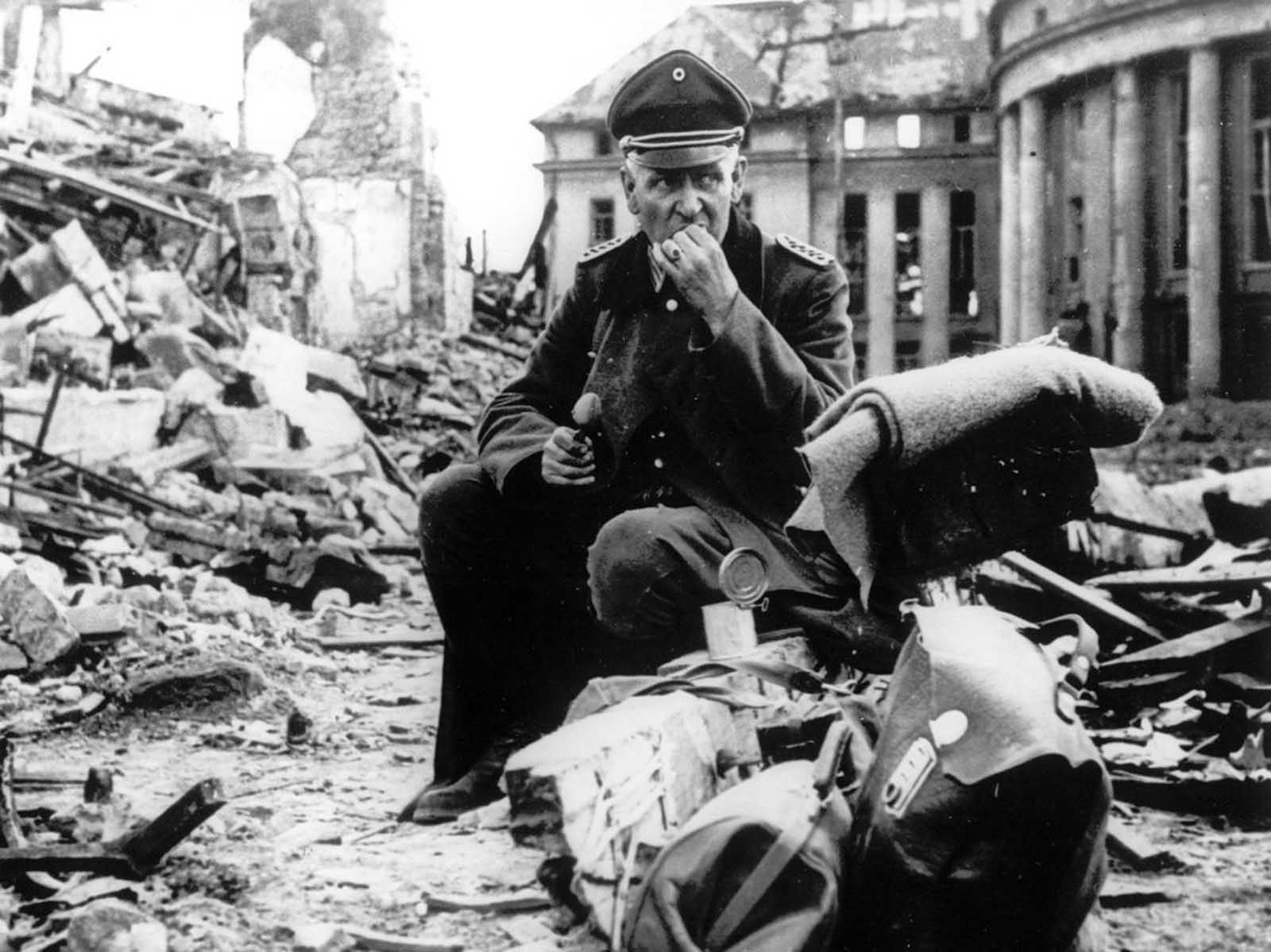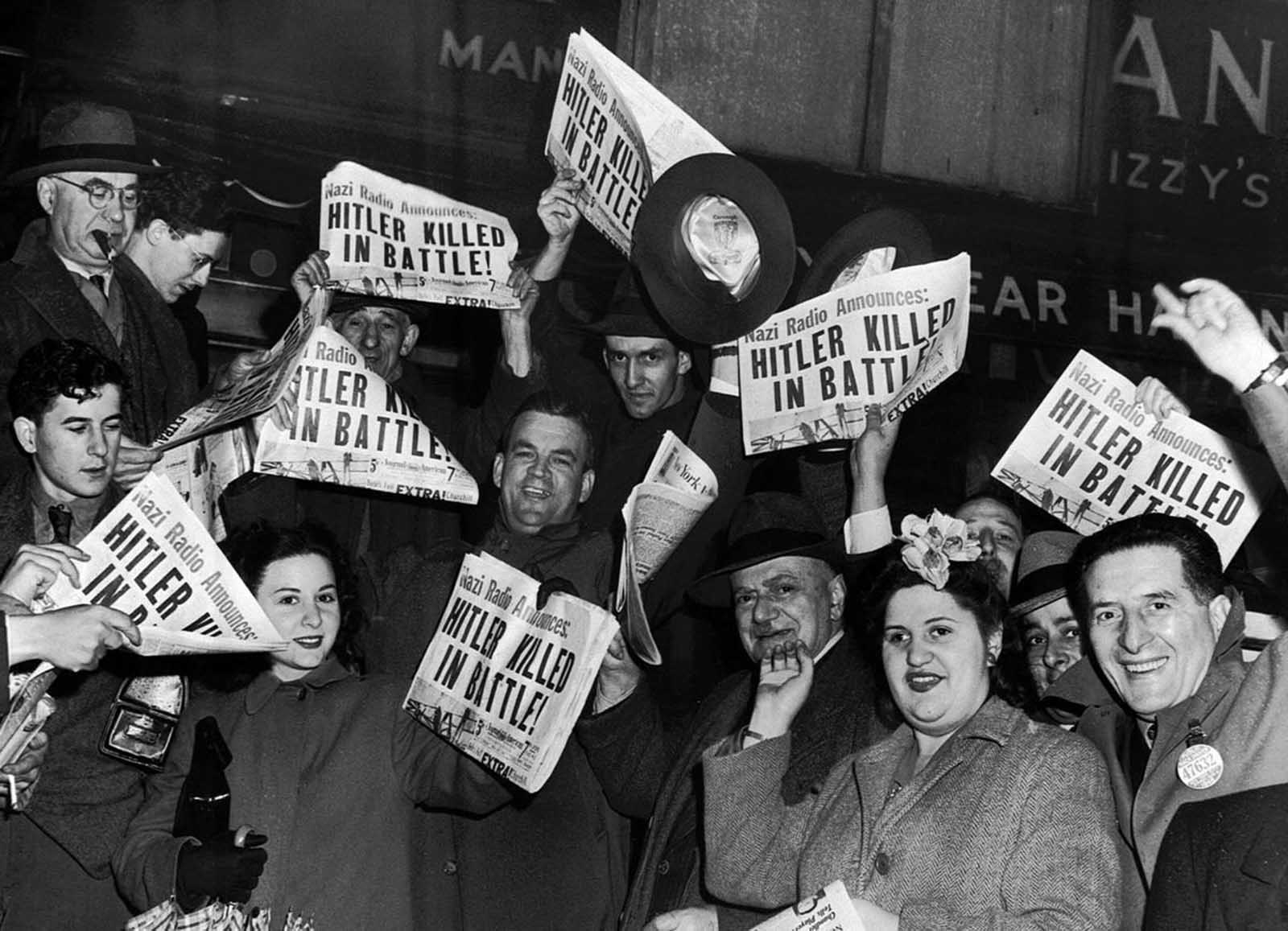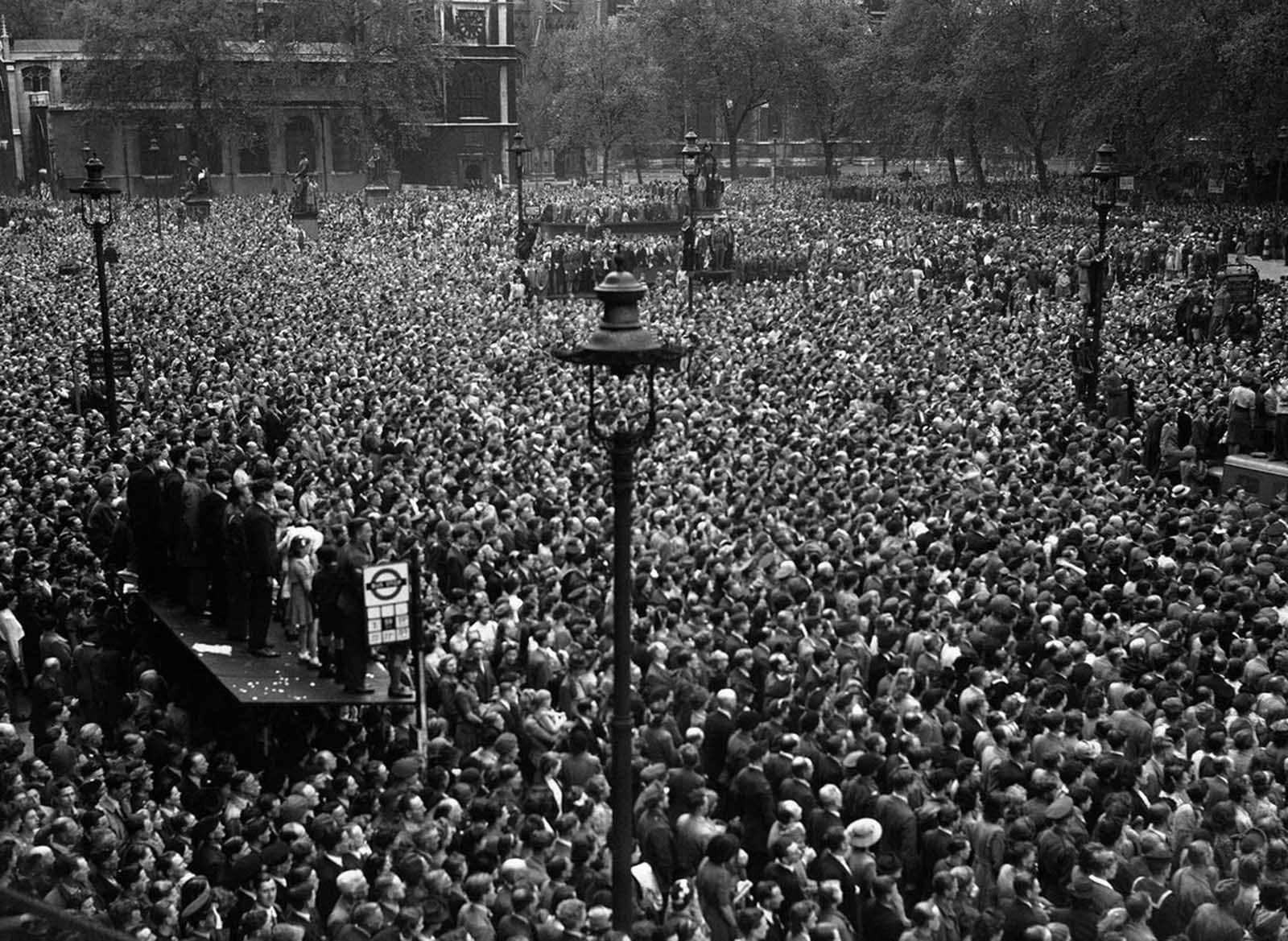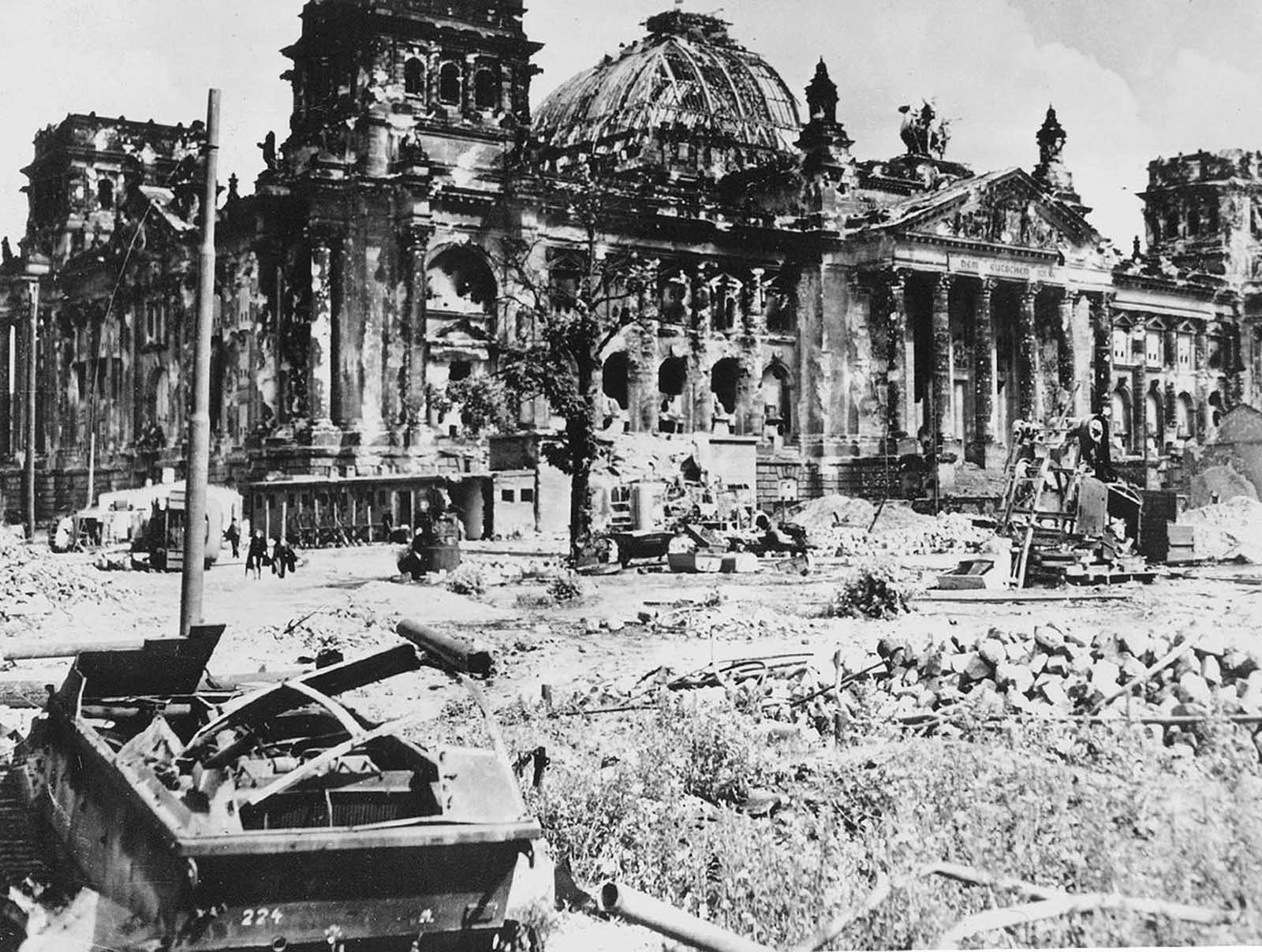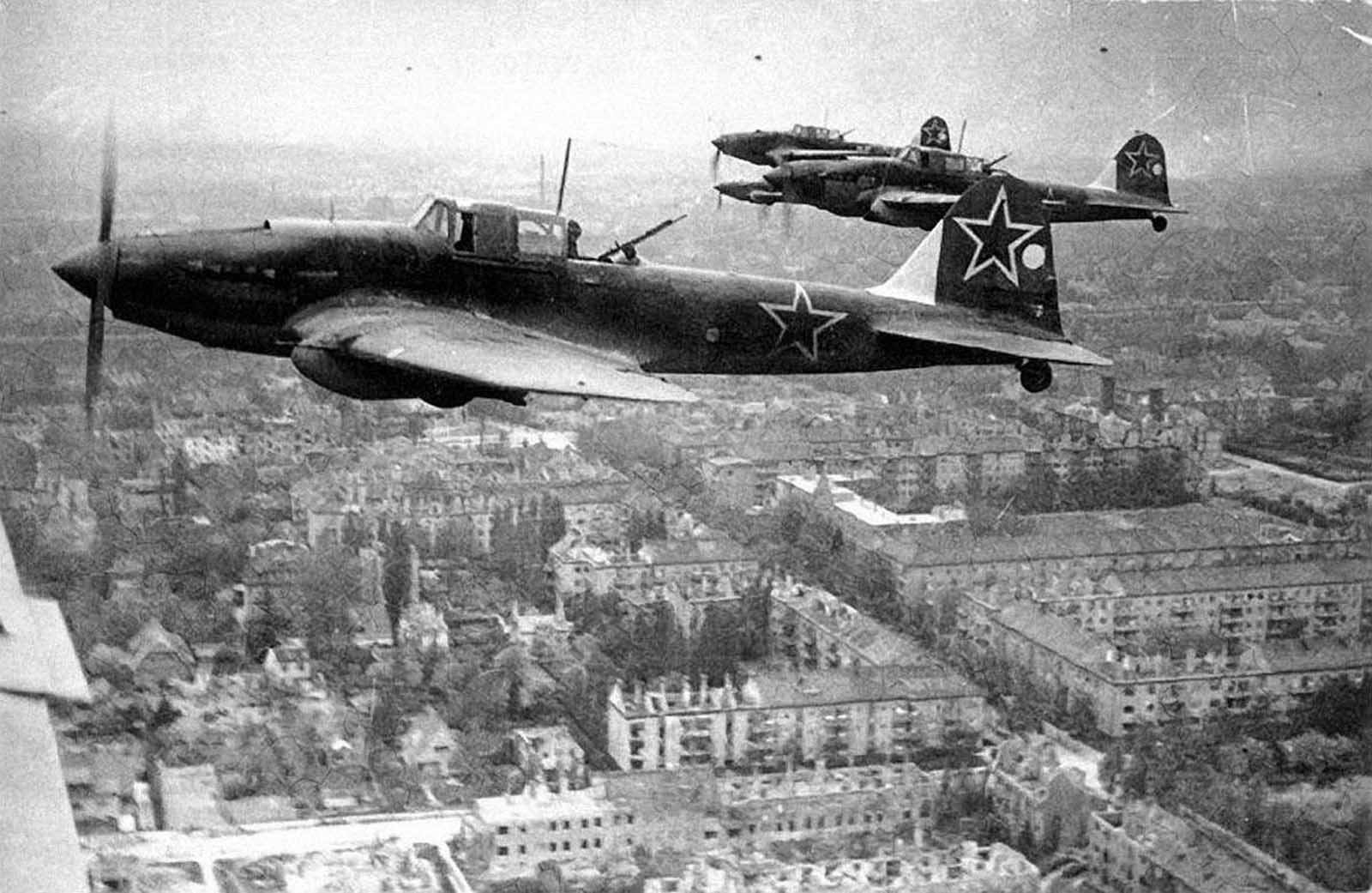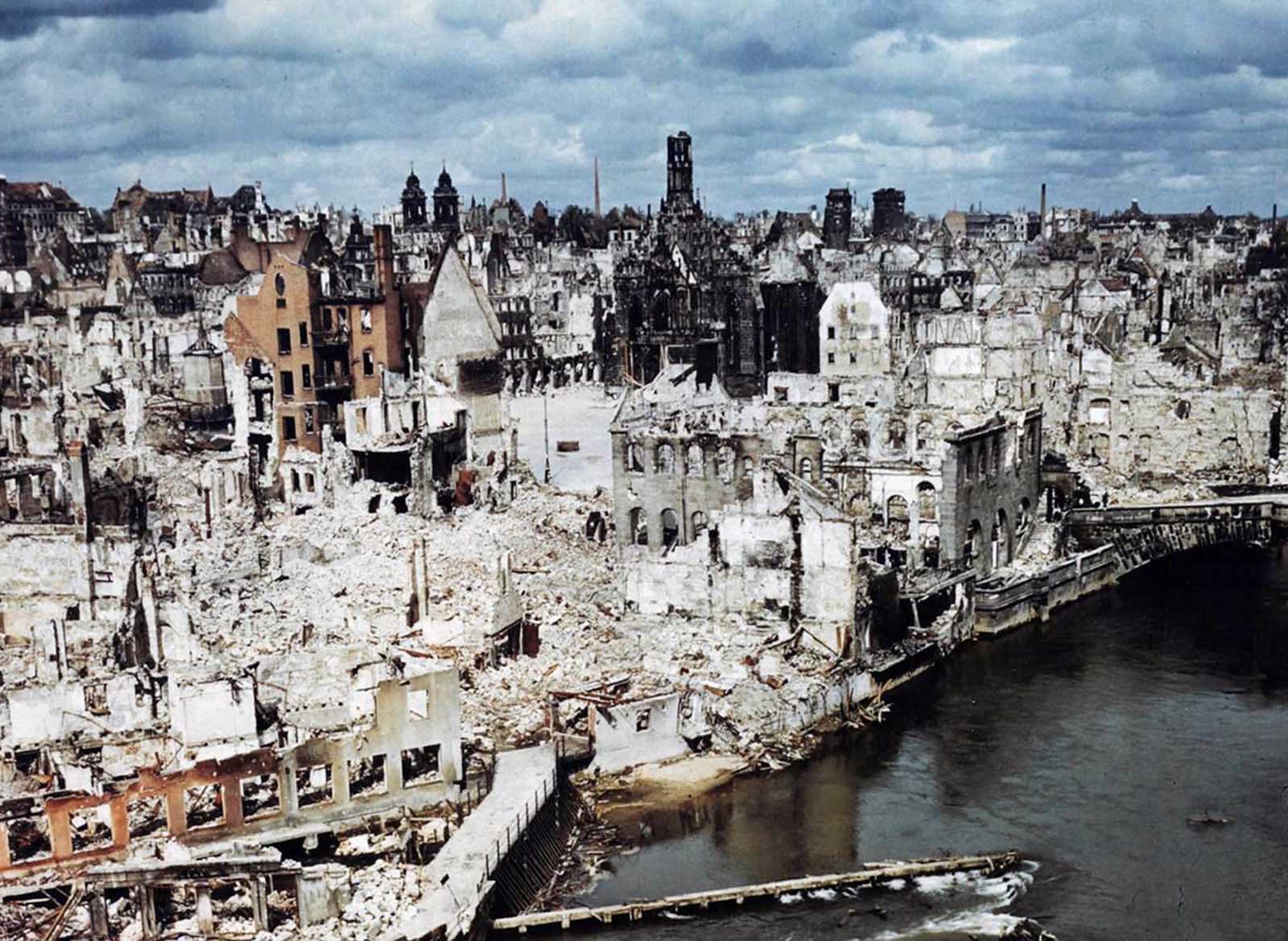The Germans held out, although by early 1945 just about everyone knew that catastrophic defeat was the inevitable outcome. They did not give up even when Russian soldiers arrived in the garden of the Reich Chancellery in Berlin. Not even the Japanese resisted like that. By March, Western Allied forces were crossing the Rhine River, capturing hundreds of thousands of troops from Germany’s Army Group B. The Red Army had meanwhile entered Austria, and both fronts quickly approached Berlin. Strategic bombing campaigns by Allied aircraft were pounding German territory, sometimes destroying entire cities in a night. In the first several months of 1945, Germany put up a fierce defense, but rapidly lost territory, ran out of supplies, and exhausted its options. In April, Allied forces pushed through the German defensive line in Italy. East met West on the River Elbe on April 25, 1945, when Soviet and American troops met near Torgau, Germany. On April 30th, as Russian troops entered the outskirts of Berlin, Adolf Hitler committed suicide. The leadership of Germany passed to Joseph Goebbels, but within 24 hours he too took his own life. Elsewhere, other Nazi leaders were either in Allied custody or running like fugitives. The German surrender came on May 7th, a week after Hitler’s death. Nazism, the proud and boastful movement of the 1930s, was drawing its final breaths. The Nazis had promised the German people dignity, respect, and prosperity – and for a time seemed to deliver on these promises. But their ultimate legacy was a war that had claimed the lives of more than 48 million people, a racial genocide unlike any other in history, and a Germany that was devastated, occupied, and torn apart for more than 40 years. (Photo credit: Library of Congress / AP Photo). Notify me of new posts by email.
Δ Subscribe


